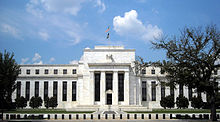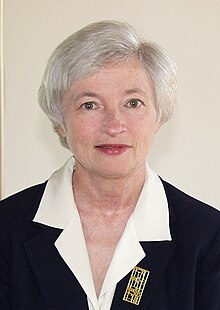Monopoly central banks issuing fiat currency are the biggest threat to the world economy, and the people of the world
This may come as a surprise to many people that despite its name, the Bank of England is a private banking company and has nothing to do with the government or any part of the public infrastructure. Because it is a private company it is operating to create a profit for its owners and shareholders. Every single penny in circulation is fiat debt money, if all debt were paid off; there would be no money in circulation whatsoever.
If the governments needs money to finance its budget, it does not raise taxes to generate money, it issues government backed bonds to the BoE to act as surety against a loan of further money, which of course is charged at interest. The Central Bank creates the money effectively out of nothing, but backed by the government bond (IOU), so they carry no risk to the bank. The government has no money, so it cannot pay off the principal of the loan, and taxes the nation just to service the interest on the loan. Another option to raise money is to sell off national assets, as has been happened under Labour, and continued under the new coalition government, such as the utility companies and gold reserves, this has the effect of reducing the nations Nett worth and putting previously nationalised organisations into foreign corporation ownership.
When the government recently “bailed out” the banks with hundreds of billions of pounds, it borrowed the money from the Bank of England with interest, to “give” to the banks to stop them failing.
We (may, maybe not) need a central bank, such as the Bank of England, but if so it should be under public ownership and not under the control of a private money making corporation. Under public ownership a central bank could instead of issuing bonds, create the money needed into circulation with no interest, and after paying off the national debt, creating more money to invest in national infrastructure such as roads, bridges, hospitals, schools etc, and creating employment to build the infrastructure, more employment means less welfare. The only issue is to avoid creating too much money which always leads to inflation, but a competent economic strategy would establish the correct amount of money required.
According to Wikipedia:
A central bank, reserve bank, or monetary authority is an institution that manages a state’s currency, money supply, and interest rates. Central banks also usually oversee the commercial banking system of their respective countries. In contrast to a commercial bank, a central bank possesses a monopoly on increasing the amount of money in the nation, and usually also prints the national currency, which usually serves as the nation’s legal tender. Examples include the European Central Bank (ECB), the Federal Reserve of the United States, and Bank of England in the UK (below).

The (reported) primary function of a central bank is to manage the nation’s money supply (monetary policy), through active duties such as managing interest rates, setting the reserve requirement, and acting as a lender of last resort to the banking sector during times of bank insolvency or financial crisis. Central banks usually also have supervisory powers, intended to prevent bank runs and to reduce the risk that commercial banks and other financial institutions engage in reckless or fraudulent behavior. Central banks in most developed nations are institutionally designed to be independent from political interference. In most cases they are not public, in the sense that they are neither state-owned nor directly regulated by government, parliament or another elected body. Still, limited control by the executive and legislative bodies usually exists.
The chief executive of a central bank is normally known as the Governor, President or Chairman.
Current US Federal Reserve Chairman Ben Bernanke is due to be replaced by Janet Yellen in 2014. Bank of England governor Mark Carney (Canadian) has recently replaced Mervyn King. European Central Bank (ECB) chairman is Mario Dragi.

The Eccles Federal Reserve Board Building in Washington, D.C. houses the main offices of the Board of Governors of the United States’ Federal Reserve System
History
Prior to the 17th century most money was commodity money, typically gold or silver. However, promises to pay were widely circulated and accepted as value at least five hundred years earlier in both Europe and Asia. The Song Dynasty was the first to issue generally circulating paper currency, while the Yuan Dynasty was the first to use notes as the predominant circulating medium. In 1455, in an effort to control inflation, the succeeding Ming Dynasty ended the use of paper money and closed much of Chinese trade. The medieval European Knights Templar ran an early prototype of a central banking system, as their promises to pay were widely respected, and many regard their activities as having laid the basis for the modern banking system.
As the first public bank to “offer accounts not directly convertible to coin”, the Bank of Amsterdam established in 1609 is considered to be the precursor to modern central banks. The central bank of Sweden (“Sveriges Riksbank” or simply “Riksbanken”) was founded in Stockholm from the remains of the failed bank Stockholms Banco in 1664 and answered to the parliament (“Riksdag of the Estates“). One role of the Swedish central bank was lending money to the government.[10]
In England in the 1690s, public funds were in short supply and were needed to finance the ongoing conflict with France. The credit of William III‘s government was so low in London that it was impossible for it to borrow the £1,200,000 (at 8 per cent) that the government wanted.
In order to induce subscription to the loan, the subscribers were to be incorporated by the name of the Governor and Company of the Bank of England. The bank was given exclusive possession of the government’s balances, and was the only limited-liability corporation allowed to issue banknotes. The lenders would give the government cash (bullion) and also issue notes against the government bonds, which can be lent again. The £1.2M was raised in 12 days; half of this was used to rebuild the Navy.
The establishment of the Bank of England, the model on which most modern central banks have been based on, was devised by Charles Montagu, 1st Earl of Halifax, in 1694, to the plan which had been proposed by William Paterson three years before, but had not been acted upon. He proposed a loan of £1.2M to the government; in return the subscribers would be incorporated as The Governor and Company of the Bank of England with long-term banking privileges including the issue of notes. The Royal Charter was granted on 27 July through the passage of the Tonnage Act 1694.
The War of the Second Coalition led to the creation of the Banque de France in 1800.
Although central banks today are generally associated with fiat money, the 19th and early 20th centuries central banks in most of Europe and Japan developed under the international gold standard, elsewhere free banking or currency boards were more usual at this time. Problems with collapses of banks during downturns, however, were leading to wider support for central banks in those nations which did not as yet possess them, most notably in Australia.
The US Federal Reserve was created by the U.S. Congress through the passing of The Federal Reserve Act in the Senate and its signing by President Woodrow Wilson on the same day, December 23, 1913. Australia established its first central bank in 1920, Colombia in 1923, Mexico and Chile in 1925 and Canada and New Zealand in the aftermath of the Great Depression in 1934. By 1935, the only significant independent nation that did not possess a central bank was Brazil, which subsequently developed a precursor thereto in 1945 and the present central bank twenty years later. Having gained independence, African and Asian countries also established central banks or monetary unions.
The People’s Bank of China evolved its role as a central bank starting in about 1979 with the introduction of market reforms, which accelerated in 1989 when the country adopted a generally capitalist approach to its export economy. Evolving further partly in response to the European Central Bank, the People’s Bank of China has by 2000 become a modern central bank. The most recent bank model, was introduced together with the euro, involves coordination of the European national banks, which continue to manage their respective economies separately in all respects other than currency exchange and base interest rates.
US Federal Reserve chairmen and the presidents during their tenure.
| # | Chairman | Term | President(s) |
|---|---|---|---|
| 1 |  Charles S. Hamlin Charles S. Hamlin |
August 10, 1914 – August 19, 1916 |
Woodrow Wilson |
| 2 |  William P. G. Harding William P. G. Harding |
August 10, 1916 – August 9, 1922 |
|
| Warren G. Harding | |||
| 3 |  Daniel R. Crissinger Daniel R. Crissinger |
May 1, 1923 – September 15, 1927 |
|
| Calvin Coolidge | |||
| 4 |  Roy A. Young Roy A. Young |
October 4, 1927 – August 31, 1930 |
|
| Herbert Hoover | |||
| 5 |  Eugene Meyer Eugene Meyer |
September 16, 1930 – May 10, 1933 |
|
| Franklin D. Roosevelt | |||
| 6 | Eugene R. Black | May 19, 1933 – August 15, 1934 |
|
| 7 |  Marriner S. Eccles Marriner S. Eccles |
November 15, 1934 – January 31, 1948[9] |
|
| Harry S. Truman | |||
| 8 | Thomas B. McCabe | April 15, 1948 – March 31, 1951 |
|
| 9 |  William McChesney Martin, Jr. William McChesney Martin, Jr. |
April 2, 1951 – January 31, 1970 |
|
| Dwight D. Eisenhower | |||
| John F. Kennedy | |||
| Lyndon B. Johnson | |||
| Richard M. Nixon | |||
| 10 |  Arthur F. Burns Arthur F. Burns |
February 1, 1970 – January 31, 1978 |
|
| Gerald R. Ford | |||
| Jimmy Carter | |||
| 11 |  G. William Miller G. William Miller |
March 8, 1978 – August 6, 1979 |
|
| 12 |  Paul A. Volcker Paul A. Volcker |
August 6, 1979 – August 11, 1987 |
|
| Ronald W. Reagan | |||
| 13 |  Alan Greenspan Alan Greenspan |
August 11, 1987 – January 31, 2006 |
|
| George H.W. Bush | |||
| Bill Clinton | |||
| George W. Bush | |||
| 14 |  Ben Bernanke Ben Bernanke |
February 1, 2006 – February 1, 2014 |
|
| George W. Bush Barack Obama |
| 15 |  Janet Yellen Janet Yellen |
February 1, 2014 – Present |
|---|---|---|
| Barack Obama |

 Saving...
Saving...